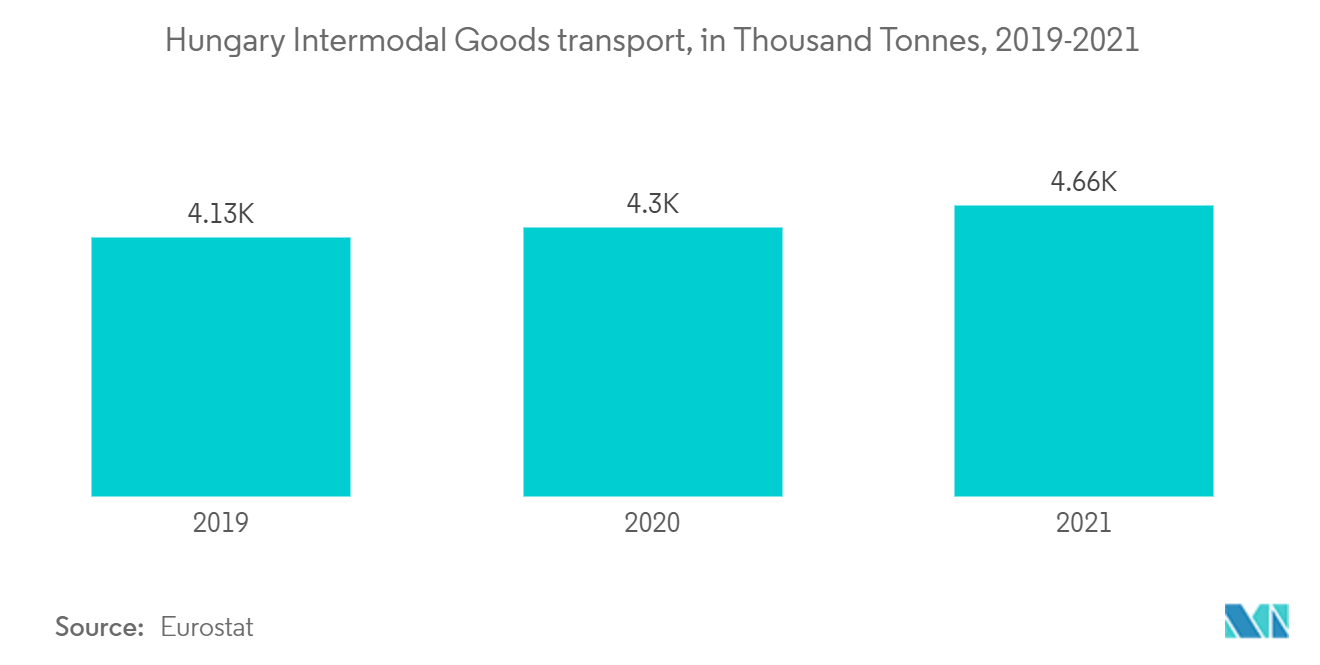Market Trends of Hungary Freight And Logistics Industry
Rise in E-commerce Sector is Driving The Market
As internet penetration and accessibility increase, more people can benefit from the majority of online services, including e-commerce. The e-commerce sector is expected to break the net, accounting for double-digit growth in locations around the world. As digital payment options become more prevalent in these regions, e-commerce will thrive immensely. In 2021, the number of e-commerce transactions in Hungary will reach nearly 69 million majority of online services, including e-commerce. The e-commerce sector is expected to break the net, accounting for double-digit growth in locations around the world. As digital payment options become more prevalent in these regions, e-commerce will thrive immensely. In 2021, the number of e-commerce transactions in Hungary will reach nearly 69 million. The highest number of online purchase transactions were made in the apparel, fashion, and sports product categories, totaling over 14 million. By 2022, the share of people shopping online will reach over 74 percent in Hungary. Moreover, with the growing popularity of e-commerce, online retail trade revenue increased year over year in Hungary. In 2021, revenues from online retail will total 1.2 trillion forints. Even though in previous years the new online shopper growth rate had slowed down, the COVID-19 pandemic led to significant growth in e-commerce. E-commerce in Hungary is expected to have a USD 2.04 billion total turnover in 2020, representing 6.2% of the total retail trade.
Due to its geographical position, Hungary occupies a central position in Europe, acting as a ferry linking the EU with the rest of Europe. U.S. companies wishing to establish a presence in Hungary can take advantage of this by establishing their logistic center in Hungary and supplying Europe from here. For instance, in April 2020, Yusen Logistics opened a new office located at the regional cargo hub in Budapest, Hungary, which will help clients around the world access Europe more easily. Therefore, the rapid expansion of e-commerce represents a major growth opportunity for logistics companies, as it generates increased demand for dedicated services.

Shift towards Intermodal Freight Transport
The freight industry is one of the most important industries because it plays a significant role in trade and commerce. Moreover, intermodal transport significantly reduces the cost and time spent on deliveries by using a combination of different modes of transport. In Hungary, the most utilized mode of transporting goods is by road. If about 10-20% of long-distance road freight traffic would be shifted to rail and waterway transport, the environmental burden of public roads could be reduced. There are more than 500,000 heavy goods vehicles on the roads of Budapest and within 70 km of the city every year. About 5 to 10% of this traffic could be a potential business partner for rail intermodal freight transport, which would mean the intermodal transport of up to 25,000 to 50,000 heavy goods trailers per year. To facilitate this shift from roads to rail and waterways, many improvements have been initiated by the Hungarian government. The road, rail, and waterway partnerships have been upgraded, allowing carriers to save costs and compensate for the significant driver shortage. Also, new industrial parks, larger warehouses, and logistics centers are being encouraged to build rail links.
Hungary is establishing a logistics base in the port of Trieste, Italy, on an area of 32 hectares. This will allow companies to reach the Hungarian sea exit by road or rail within 24 hours. As part of the National Intermodal Container Terminal Network, the country has also worked on projects to set up intermodal hubs.
The East-West Gate (EWG) terminal is located at a junction between Hungary's 1435-mm and Ukraine's 1520-mm-gauge rail lines, south of the border crossing point of Zahony. The facility can handle up to one million 20-foot containers per year. The terminal will load the trucks and conventional road semi-trailers onto the rail as well as provide trans-shipment of wagons between the two gauges. Moreover, the Hungarian government has committed 12.4 billion forints (USD 0.035 Billion) to improve rail infrastructure around EWG as well as the Zahony Wide station.


